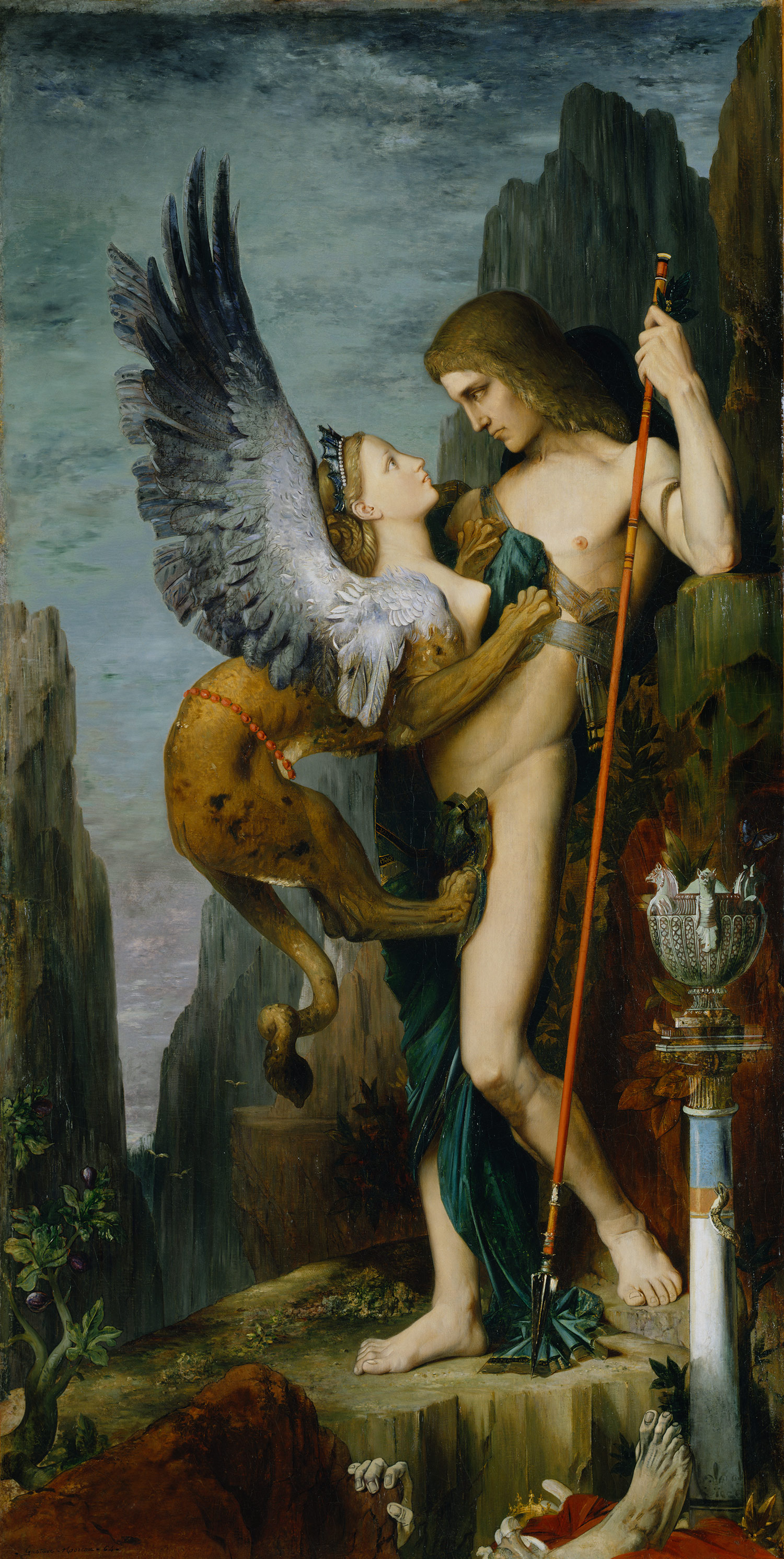To commemorate the 100th anniversary of the death of French artist Gustave Moreau (1826-1898), The Metropolitan Museum of Art presented a major exhibition fom June 1 to August 22, 1999.It was the largest retrospective of Moreau's work ever shown in the United States — featuring masterpieces from every phase of his distinguished career. Gustave Moreau: Between Epic and Dream included nearly 175 works — some 40 paintings and 60 watercolors in addition to drawings and preparatory studies, lent primarily from the Musée Gustave Moreau in Paris, with other works drawn from public and private collections in Europe and America.
Best known for his mysterious and complex allegorical paintings based on classical, literary, and biblical sources, Moreau was much admired in his own day. His fantastic, dream-like imagery and emphasis on the personal and intuitive nature of artistic creation profoundly influenced later 19th- and 20th-century artists — not only his students Georges Rouault, Albert Marquet, and Henri Matisse, but also the Symbolists and Surrealists. Spanning 50 years of this remarkable artist's career, the exhibition included the majority of Moreau's most celebrated Salon paintings, as well as many watercolors and drawings that had not previously been exhibited or even published.
The exhibition was organized by The Metropolitan Museum of Art, the Réunion des musées nationaux, and The Art Institute of Chicago.
About the Artist
Organized chronologically, Gustave Moreau: Between Epic and Dream clearly revealed an extraordinarily original and imaginative artist who, free from financial constraints and concerns of the marketplace, was able to pursue his own artistic vision. Unlike many of his contemporaries, Moreau was less concerned with the external visual world than with profound and hidden truths; these he often sought in the realm of imagination and dreams. He was not "a painter of modern life" — the Impressionists' mandate — but of traditional subjects and enduring universal themes, which he reinterpreted in unique and novel ways. A man of elegance and erudition, Moreau reinvigorated the tradition of history painting by adding a new, imaginative, and poetic dimension to it. His mysterious and evocative treatment of classical mythology and religious subject matter inspired many late-19th-century Symbolist painters and writers. Later, Surrealists such as André Breton found strong encouragement in Moreau's fearless declaration that "I have allowed my imagination free play, and have not been led astray by it."
Like other artists and writers in the mid-19th century, Moreau found the culture of his time to be overly materialistic and indifferent to religion and art. He looked to the art of antiquity, the Middle Ages, the Italian Renaissance, 17th-century France, and non-Western cultures to develop a form of expression that offered spiritual guidance in what he believed to be an age of confusion. He traveled to Italy for a prolonged trip in 1857, where, alongside his friend Edgar Degas, he copied the pictures in museums and churches. While works of the Italian masters left a lasting impression on Moreau, his art continued to evolve in unpredictable directions.
His early paintings are imbued with the beauty and passion of Romantic art, while those of the 1860s and 1870s make epic statements by fusing classical erudition with ever-increasing technical mastery. In these works, the dramatic overtones of Romantic painters such as Delacroix and Géricault are deftly combined with the exquisitely precise draftsmanship of Poussin and Ingres. Also evident in the artist's richly textured canvases and watercolors are the intricately detailed surfaces and shimmering fabrics that betray his admiration for the exoticism and precise rendering seen in Persian and Indian miniatures.
Exhibition Highlights
Two major salon paintings by Moreau — the Metropolitan's own

Oedipus and the Sphinx (1864)

and the Art Institute of Chicago's Hercules and the Lernaean Hydra (1869-76)
— were the centerpieces of two special dossiers within the exhibition.
Oedipus and the Sphinx established Moreau's artistic reputation when it caused a sensation at the Salon of 1864, earning a medal for the artist. The large-scale painting, which depicts an intense moment of confrontation in the Greek myth, also has a more universal interpretation, as Moreau explained: the moment when "a man of mature age wrestles with the enigma of life." The exhibition placed the work in the context of more than 20 preparatory drawings and watercolors, as well as several caricatures after the picture, revealing Moreau's development of the composition and the public's reaction to the painting.
Another of Moreau's carefully conceived paintings, Hercules and the Lernaean Hydra, exhibited at the Salon of 1876 along with the equally acclaimed

Salome — on view in the same gallery of the exhibition — was the focus of a dossier that features nearly 40 paintings, watercolors, and drawings that include life studies of models, compositional sketches, drawings of snakes from life and scientific texts, tracings, and cartoons.
Many of Moreau's late works may well surprise viewers to the exhibition. These paintings and watercolors from the late 1870s, '80s, and '90s reveal the artist as one of the first to explore the expressive qualities of color in what appear to be abstract compositions. Generally conceived as color studies or sketches in preparation for other paintings, these works were never exhibited or sold during the artist's lifetime. Since they were first encountered by audiences in retrospectives held in the early 1960s, these works have been the focus of considerable discussion, particularly in terms of defining Moreau's potential relationship or perceived affinity to 20th-century artists, such as Jackson Pollock, Clifford Still, and other Abstract Expressionists.
Publication

Gustave Moreau: Between Epic and Dream was accompanied by a catalogue. Published by The Art Institute of Chicago, the 320-page book features 291 illustrations, including 162 in color.
Organizers
At the Metropolitan, the exhibition was organized by Rebecca A. Rabinow, Research Associate, Department of European Paintings.
The exhibition premiered at the Grand Palais, Paris, and was also on view at The Art Institute of Chicago prior to the Metropolitan's presentation.
More Moreau

The Apparition

Galatea

Salome Dancing before Herod

Thracian Girl Carrying the Head of Orpheus